The thirty fifty annual Concours d'Elegance weekend kicked off earlier today with the RM Auction Preview at the Inn at St. John's
Summer in the Motor City
July and August are special months here in metro Detroit as they typically mark the epitome of a summer-long series of events celebrating the automobile. August, of course, means that it's Woodward Dream Cruise time – the largest event of its kind in the world.
But preceding that is the Concours d'Elegance of America, now in its thirty-fifth year, that brings together hundreds of vehicles ranging from what can accurately be described as horseless carriages from the turn of the century up to and including the legendary muscle cars of the nineteen sixties and seventies.
RM Auctions
Not to be overlooked is the annual RM Auction held on the eve of the Concours on Saturday. As in years past, on Friday RM hosted a public viewing of many of the vehicles that will cross the stage on Saturday.
Here for your viewing pleasure are a select three with edited descriptions courtesy of RM Auctions.
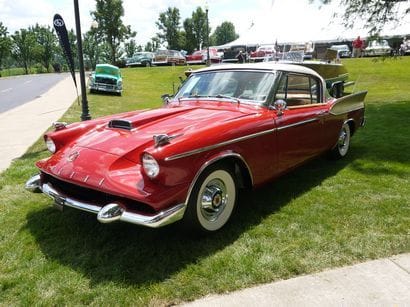
1958 Packard Hawk Sport Coupe
275 bhp, 289 cu. in. overhead valve V-8 engine with a McCulloch centrifugal supercharger, Borg-Warner Flight-O-Matic three-speed automatic transmission, independent front suspension with unequal length A-arms, coil springs, and anti-sway bar, live rear axle with semi-elliptic leaf springs, and four-wheel hydraulic drum brakes. Wheelbase: 120.5 in.
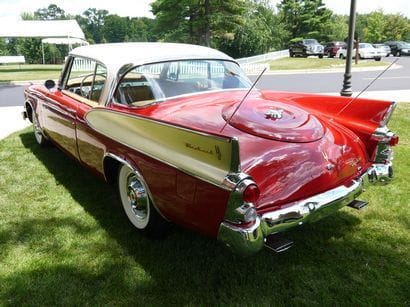
In 1957, Packard went from being America's foremost automaker to the prestige brand of Studebaker in South Bend, Indiana.

The driver faced a dashboard with a full complement of instrumentation, including a tachometer and boost and vacuum gauges, which makes it all the better for monitoring the performance of the 275-horsepower V-8 with its McCulloch centrifugal supercharger, exhaling through dual exhaust. Capable of 125 mph, the Hawk was the fastest Packard yet.
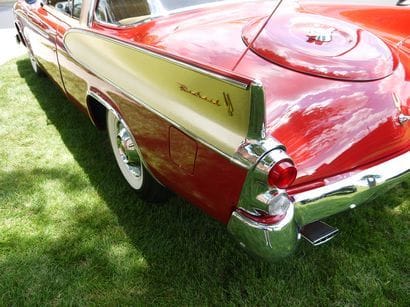
In the end, it would be the fastest Packard ever built, period, as the 1958 model year proved the last for this famed marque. The Hawk was a "one year wonder," with only 588 made, which is befitting of the factory's advertising claim that it was, indeed, "the most exclusive car in America."
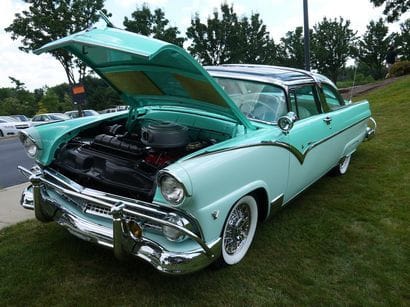
1955 Ford Fairlane Crown Victoria "Skyliner"
245 hp, 312 cu. in. OHV V-8 engine, three-speed Ford-O-Matic transmission, coil-spring independent front suspension with added sway bar, live rear axle with semi-elliptic leaf spring suspension, and power-assisted front disc and rear drum brakes. Wheelbase: 115.5 in.
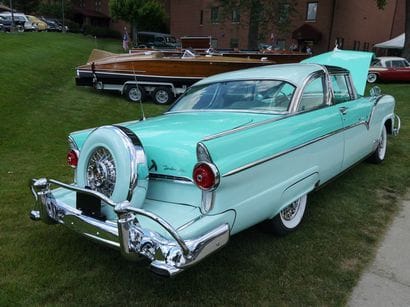
The Ford Motor Company introduced its novel Crestline Skyliner and Mercury Monterey Sun Valley (called the Monarch Lucerne in Canada) for the 1954 model year. Both featured a tinted Plexiglas roof panel over the driver and front passenger to tone down light, heat, and glare.
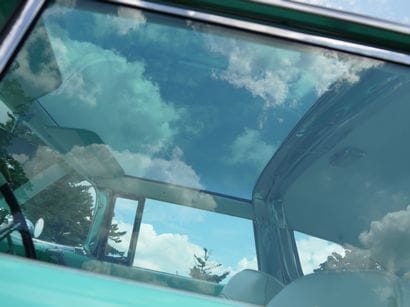
Both Ford and Mercury models received a handsome restyle for 1955, and both divisions moved their "bubbletops" up-market; Ford's was now part of its new, top-of-the-line Fairlane Crown Victoria series. It featured a non-structural chrome roof band which is deeply desired by today's collectors. Ford built 1,999, at a base cost of $2,177, with V-8 engines, which was significantly less than in its debut year.

1954 Jaguar XK120 M Roadster
180 hp, 3,442 cc DOHC inline six-cylinder engine, four-speed manual transmission, front independent suspension with double wishbones, rear live axle with semi-elliptical leaf springs, and hydraulic four-wheel drum brakes. Wheelbase: 102 in.

Originally designed to maintain public interest in the company, Jaguar envisioned the new XK120 as a hand-built specialty vehicle of just 200 alloy-bodied, ash-framed units. However, the demand for the new post-war Jaguar was so high after its debut at the 1948 London Motor Show that Jaguar Cars, of Coventry, was forced to put the vehicle into production.
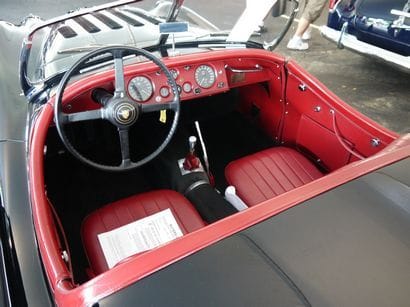
The XK Jaguar was given the body type number of 120, to represent its top speed. This actually proved to be an understatement when factory test driver Ron Sutton was clocked in a prototype on a Belgian road at over 132 mph! Race versions of the XK120 proved potent in the hands of drivers like Stirling Moss and Phil Hill, who both recorded important victories in 1949.
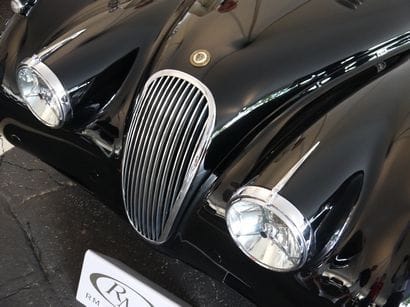
To maintain the XK120's competitive edge on the racing circuit and the sales floor, a series of improvements punctuated its six-year production run. One of the most desirable upgrades arrived in 1953. Simply named SE, for "Special Equipment" (also known as M in the U.S.), this variant produced 180 horsepower with the addition of high-lift camshafts, stiffer valve springs, SU H8 carburetors, and dual exhaust outlets, while wire-spoke wheels and a host of other desirable features heralded its arrival as the fastest XK120 available from Coventry.













